Hi again!
Here's the Friday, Sept 19th update! (WOW! Is it that late in the year already?! ![Shock [:O]](/emoticons/icon_smile_shock.gif) )
)
I applied a simple black/Van Dyke Brown oil wash to the model. It has toned down the paint scheme somewhat:

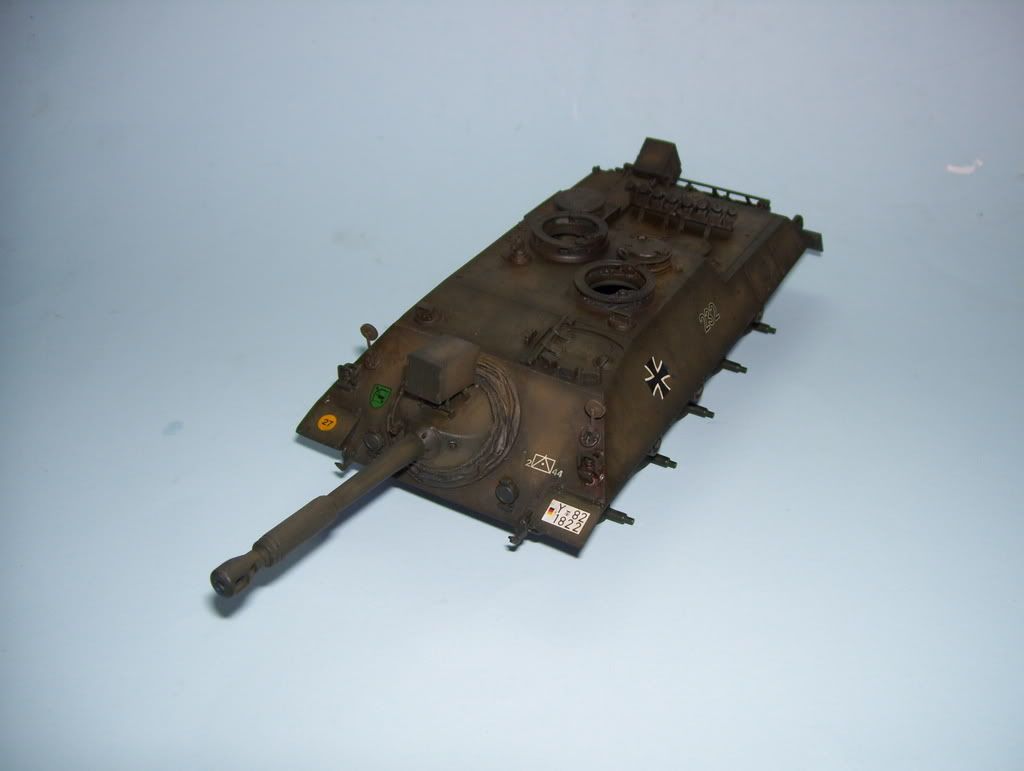
The tracks have been finished; they look like some "Giant Squid" tentacles! LOL!
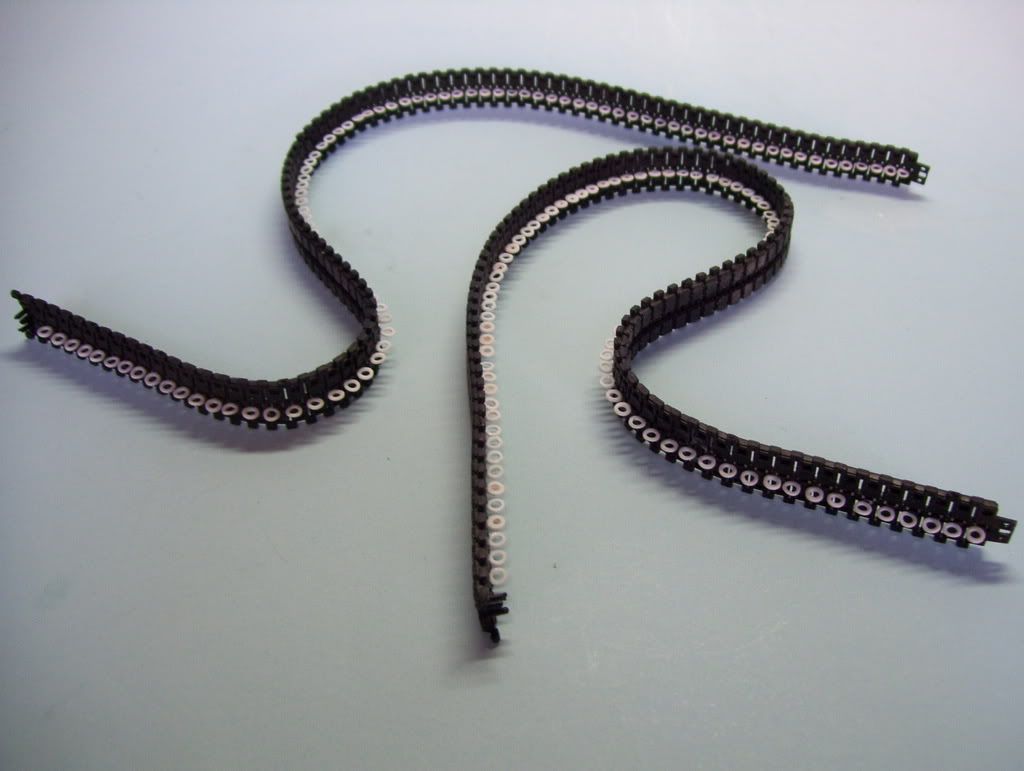
Now, I asked myself, "Hmmm...how to weather this modern vehicle?" I didn't have the "luxury" of having the "comfort zone" of Dark Yellow, and I didn't want to just work within the pardaigms of what I normally use for weathering on German WWII vehicles. I also don't want to "overdo it".
Looking at the reference photos of Bundewehr vehicles in this color scheme, I was struck by the fact that they always seem to be covered with dried mud on the lower hull. To simulate this, I mixed up some Tamiya Dark Yellow, White, a touch of Black, Gray, and a speck of Red Brown til it looked right, and gave the hull and wheels/tracks a liberal covering of it....
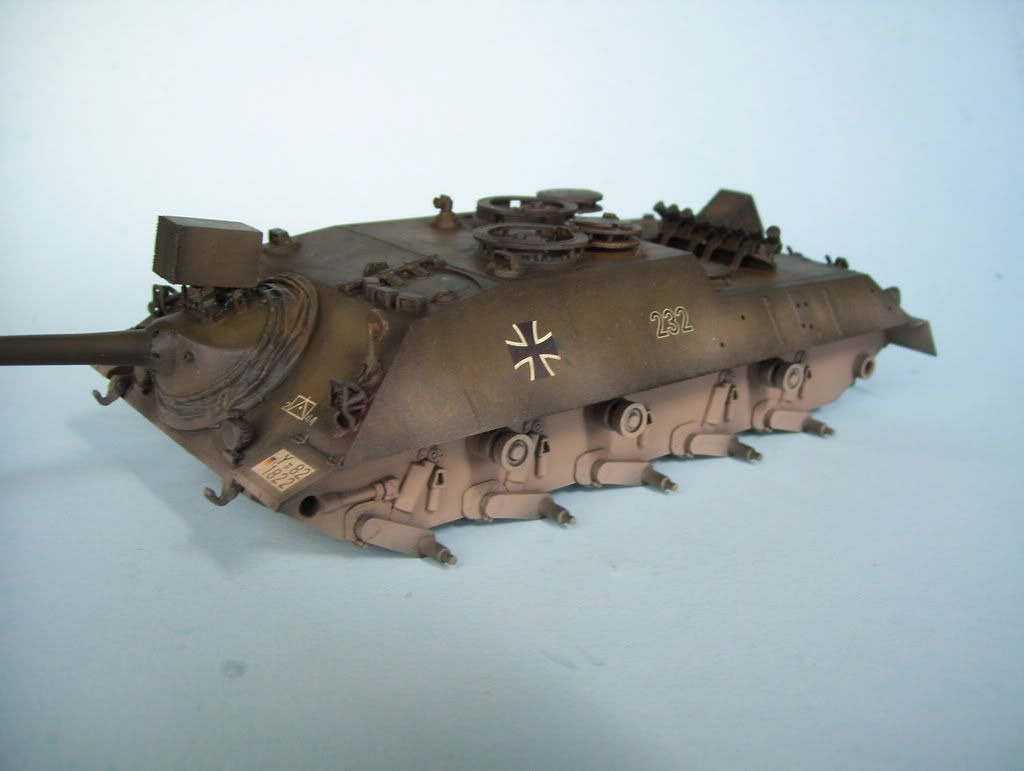
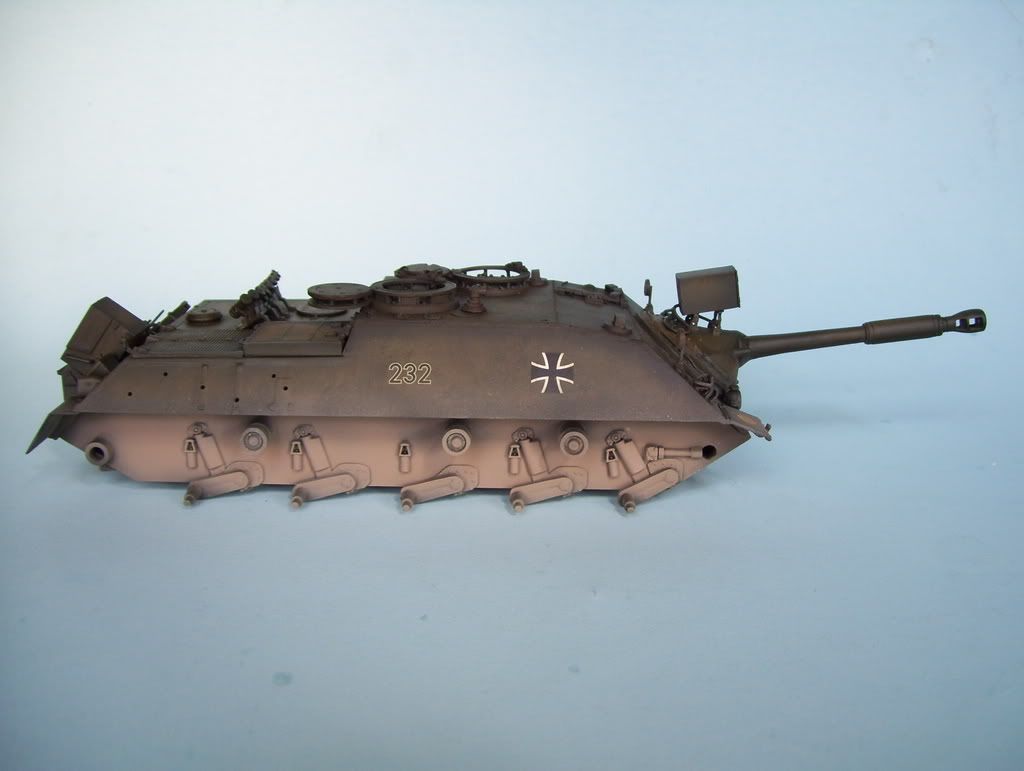
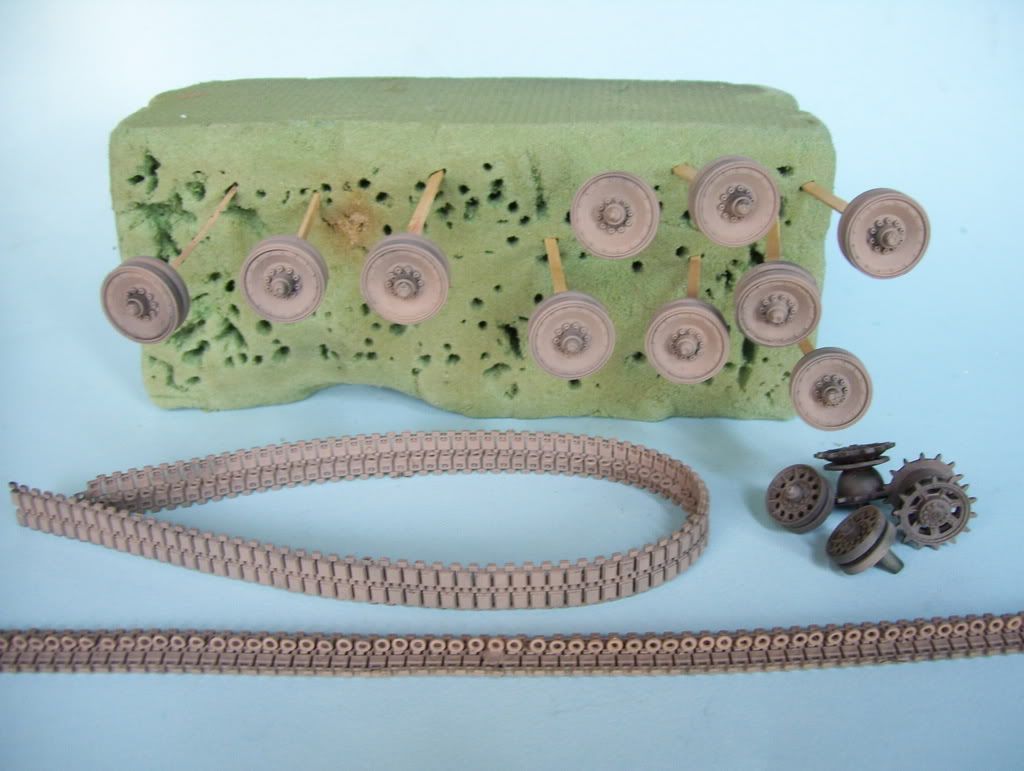
Now I was left with trying to get the look of where the vehicle had brapped through wet areas or encountered mud. How would I get the look of the mud being washed away in select areas? I know that standard technique says to use base coior, and streak that on...hmmm....could there be a better way? A more "literal" way?
I thoght about how I use Testor's Liquid cement to clean my airbrush parts--it completely strips away acrylic residue in seconds. Why couldn't it work to strip away some paint in a weathering process?
So I went in with the brush. I would simply dip in the brush, dab the excess off on a paper towel, and attack the paint. Working quickly, I would pull it down, clean it quickly by dabbing it off on the paper towel, and re-wetting/dabbing/attacking again... Here's the technique "in action"...
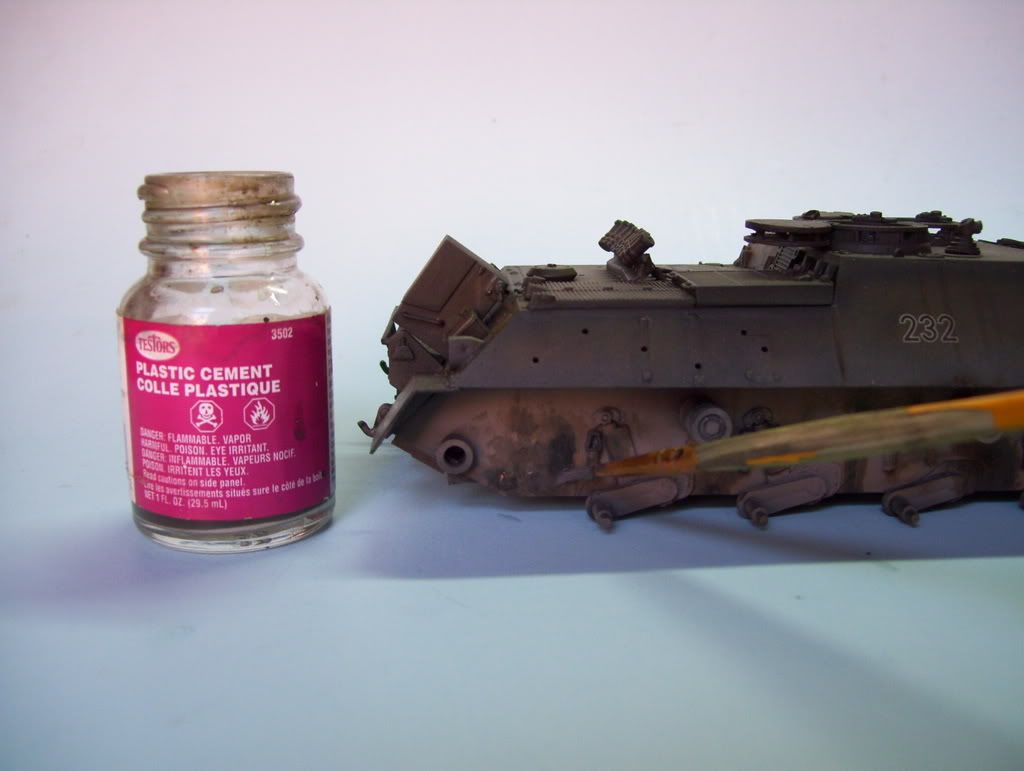
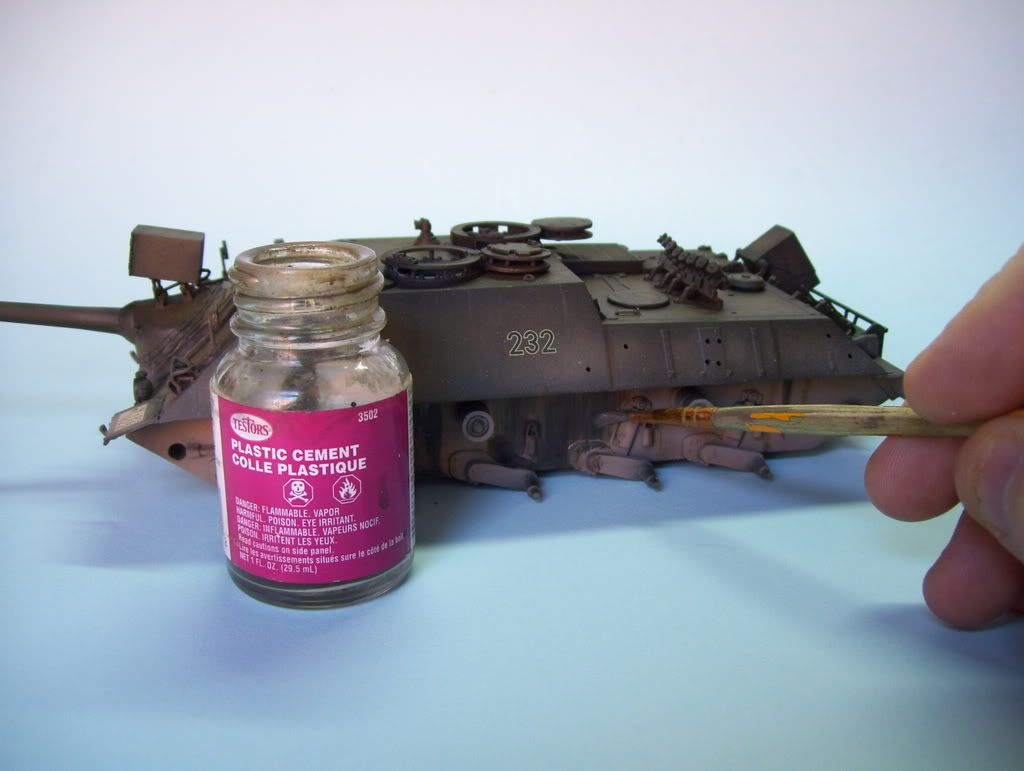
The wheels got the same treatment...
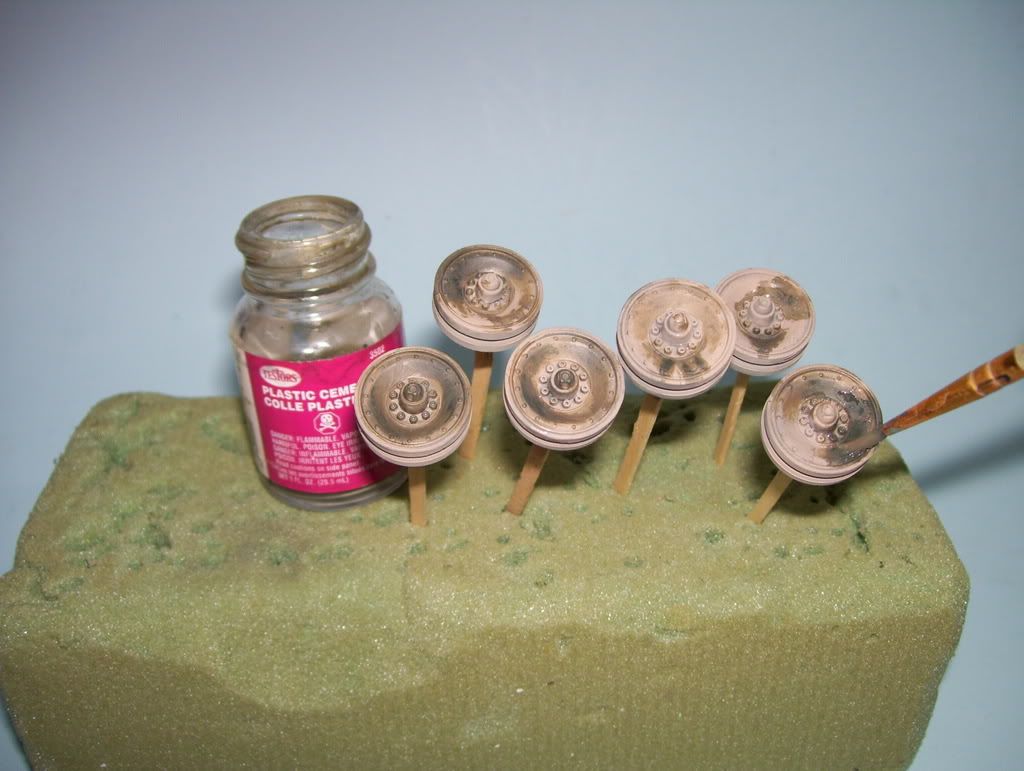
....and here's where I am so far...
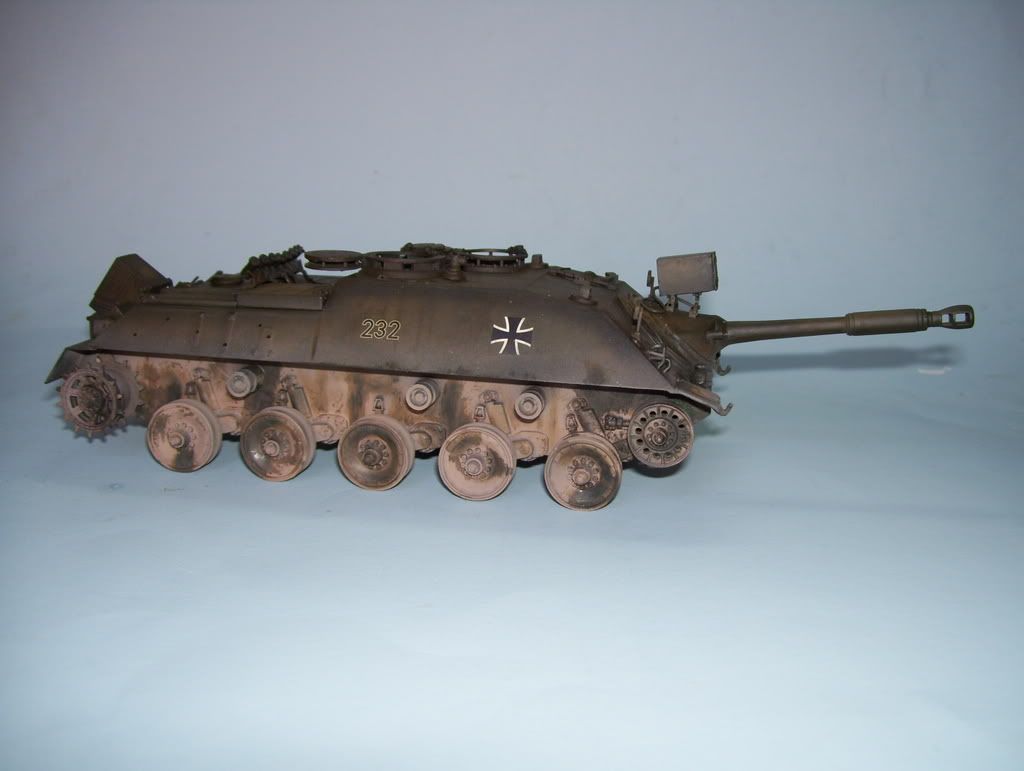
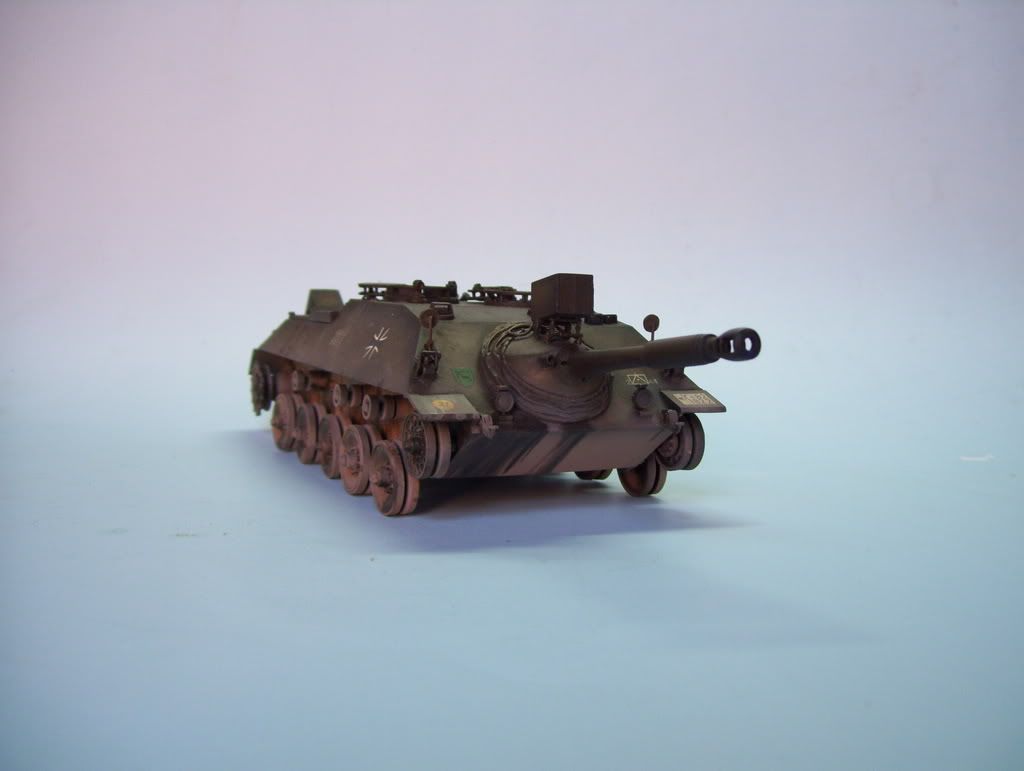
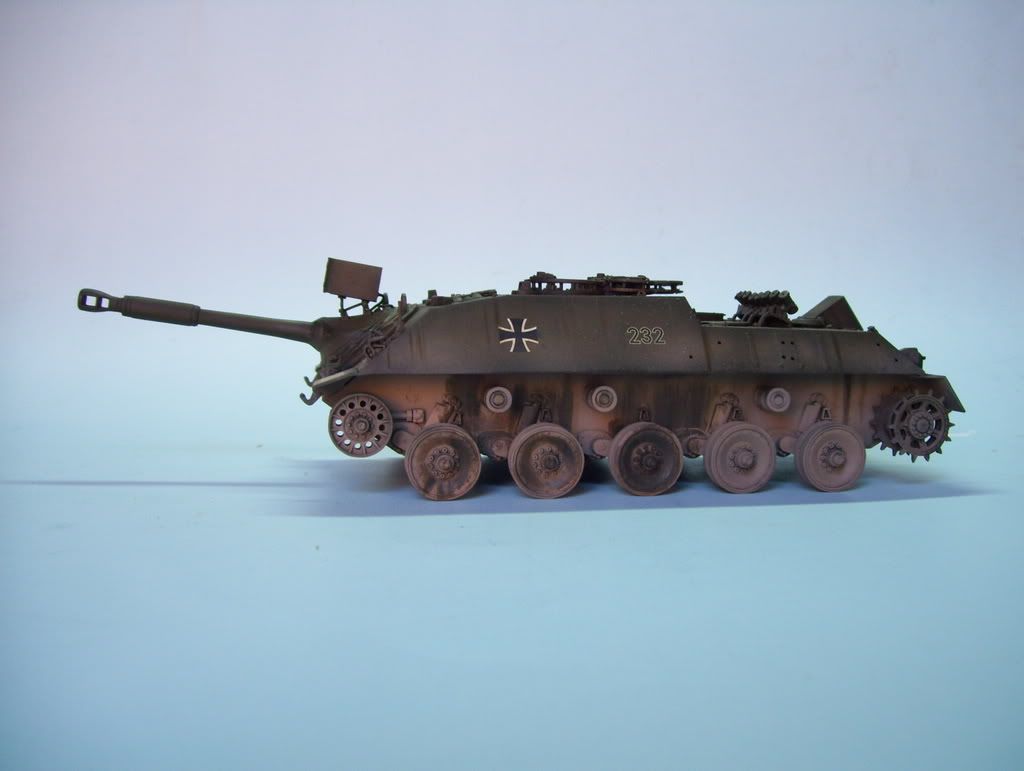
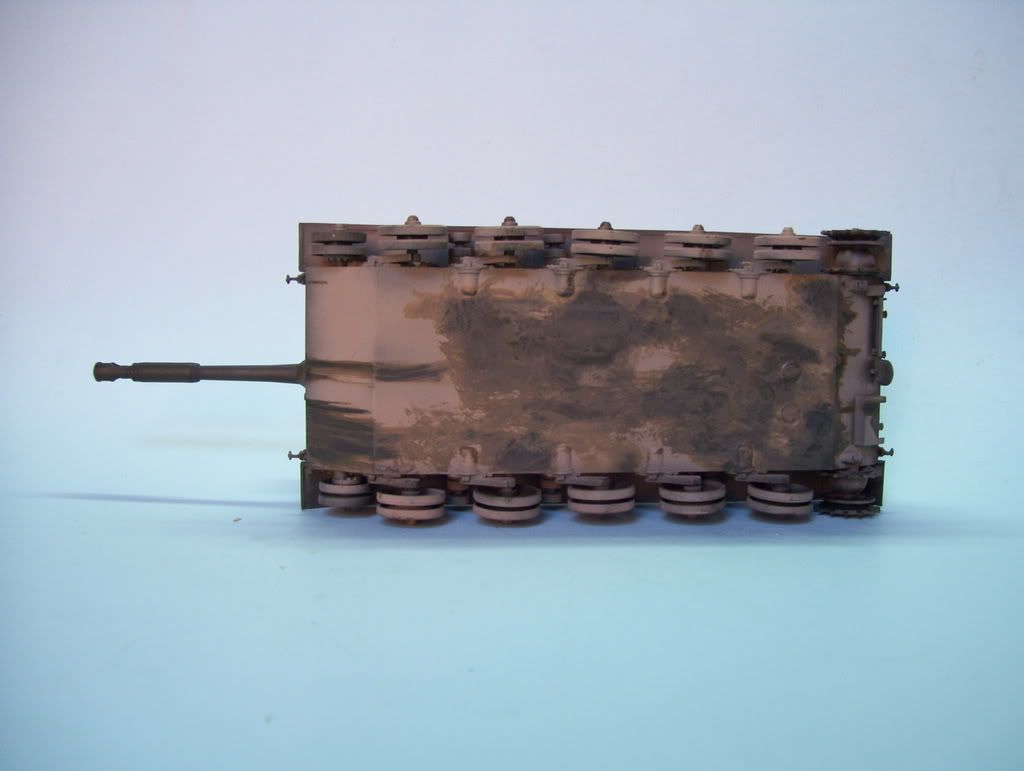
All, in all, what do you guys think? Too much? Just right? I'm pretty relieved tha it seems to have NOT really ruined the look of the base coat, and has achieved the look I was after. What do you think?
Comments welcomed!!!